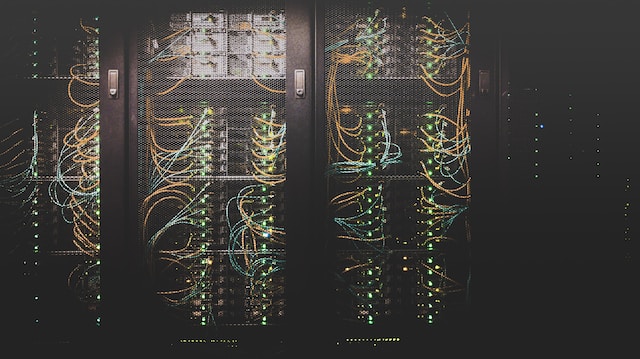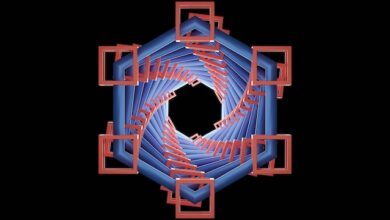5G and the Internet of Things: A Match Made in Tech Heaven

The rollout of 5G technology marks a significant leap in wireless communication, offering faster speeds, lower latency, and greater connectivity compared to previous generations. This technological advancement is set to revolutionize the Internet of Things (IoT), an ecosystem of interconnected devices that communicate and exchange data. The synergy between 5G and IoT promises to transform various sectors, including smart cities, healthcare, manufacturing, and transportation. This article explores how 5G enhances IoT capabilities, potential applications, and the challenges and future outlook of this transformative partnership.
The Evolution of 5G and IoT
1. 5G: The Next Generation of Connectivity
5G is the fifth generation of mobile networks, designed to provide faster data transfer rates, reduced latency, and increased network capacity. It offers speeds up to 100 times faster than 4G and latency as low as 1 millisecond, enabling real-time communication and data processing. The enhanced capabilities of 5G are made possible by technologies such as millimeter waves, small cells, massive MIMO (multiple input, multiple output), and beamforming.
2. The Internet of Things (IoT)
The IoT refers to a network of physical devices embedded with sensors, software, and connectivity, allowing them to collect and exchange data. These devices range from everyday household items to industrial machinery and wearable technology. The IoT ecosystem relies on various communication protocols, including Wi-Fi, Bluetooth, and cellular networks, to enable device interaction and data transmission.
How 5G Enhances IoT Capabilities
The integration of 5G and IoT brings several benefits, enhancing the functionality and efficiency of IoT systems.
1. Ultra-Low Latency
One of the most significant advantages of 5G is its ultra-low latency, which allows for near-instantaneous data transmission. This capability is crucial for applications requiring real-time responses, such as autonomous vehicles, remote surgery, and industrial automation. With 5G, IoT devices can communicate and process data faster, enabling more precise and timely actions.
2. High Data Transfer Speeds
5G’s high data transfer speeds enable the rapid transmission of large volumes of data. This is particularly beneficial for IoT devices that generate substantial data, such as high-definition cameras and industrial sensors. The ability to transmit data quickly allows for real-time monitoring, analysis, and decision-making, improving operational efficiency and effectiveness.
3. Massive Device Connectivity
5G can support a massive number of connected devices per square kilometer, far exceeding the capacity of 4G networks. This capability is essential for large-scale IoT deployments, such as smart cities, where thousands of devices need to communicate simultaneously. The increased device density supported by 5G ensures reliable connectivity and data exchange in crowded environments.
4. Enhanced Reliability and Coverage
5G networks offer enhanced reliability and coverage, providing consistent and robust connectivity across various environments. This is vital for IoT applications that require continuous operation, such as critical infrastructure monitoring and emergency response systems. The improved coverage of 5G also enables IoT devices to operate in remote and rural areas, expanding the scope of IoT applications.
Potential Applications of 5G and IoT
The combination of 5G and IoT unlocks new possibilities across multiple sectors, offering innovative solutions and improved services.
1. Smart Cities
5G-enabled IoT devices can enhance various aspects of urban living, from traffic management and energy efficiency to public safety and waste management. Smart city applications include intelligent traffic lights, smart street lighting, and real-time public transportation monitoring. These solutions can reduce congestion, lower energy consumption, and improve the quality of life for residents.
2. Healthcare
The healthcare sector can benefit significantly from 5G and IoT integration. Remote monitoring devices can collect and transmit patient data in real-time, allowing healthcare professionals to monitor health conditions and respond quickly to emergencies. Additionally, telemedicine applications, such as remote consultations and virtual surgeries, can become more reliable and effective with 5G’s low latency and high-speed connectivity.
3. Manufacturing and Industry 4.0
5G and IoT can drive the adoption of Industry 4.0, characterized by smart factories and automation. IoT sensors can monitor machinery and equipment, enabling predictive maintenance and reducing downtime. 5G’s high-speed and low-latency capabilities support real-time control of robotic systems and automated production lines, increasing efficiency and productivity.
4. Transportation and Autonomous Vehicles
The automotive industry is set to undergo a transformation with the advent of 5G and IoT. Autonomous vehicles rely on real-time data exchange with other vehicles, infrastructure, and cloud services to navigate safely. 5G’s low latency and high data transfer speeds enable faster and more reliable communication, enhancing the safety and efficiency of autonomous driving systems. Additionally, smart transportation systems can optimize traffic flow, reduce accidents, and lower emissions.
5. Agriculture
Smart agriculture, or precision farming, can benefit from 5G and IoT by enabling real-time monitoring and control of agricultural processes. IoT sensors can collect data on soil moisture, temperature, and crop health, allowing farmers to make data-driven decisions. 5G’s reliable connectivity ensures that data is transmitted promptly, enabling precise irrigation, fertilization, and pest control.
Challenges and Future Outlook
While the combination of 5G and IoT offers numerous benefits, several challenges must be addressed for widespread adoption.
1. Infrastructure and Deployment Costs
The deployment of 5G infrastructure, including small cells and base stations, requires significant investment. The high costs associated with 5G infrastructure may slow the rollout, particularly in rural and underserved areas. Additionally, upgrading existing IoT devices to support 5G may incur additional expenses.
2. Security and Privacy Concerns
The increased connectivity and data exchange enabled by 5G and IoT raise security and privacy concerns. IoT devices can be vulnerable to cyberattacks, leading to data breaches and unauthorized access. Ensuring the security of IoT systems and protecting user data are critical challenges that require robust encryption, authentication, and security protocols.
3. Standardization and Interoperability
The IoT ecosystem comprises various devices, platforms, and communication protocols, leading to challenges in standardization and interoperability. The lack of uniform standards can hinder seamless communication and data exchange between devices, limiting the potential of 5G and IoT. Developing global standards and promoting interoperability is essential for the success of 5G-enabled IoT applications.
Conclusion
The integration of 5G and IoT represents a significant technological advancement, offering enhanced connectivity, speed, and efficiency. The combination of these technologies has the potential to revolutionize various sectors, including smart cities, healthcare, manufacturing, transportation, and agriculture. While challenges such as infrastructure costs, security, and standardization remain, ongoing innovations and investments in 5G and IoT will drive their adoption and development. As 5G networks continue to expand, the possibilities for IoT applications will grow, leading to a more connected, intelligent, and efficient world.




